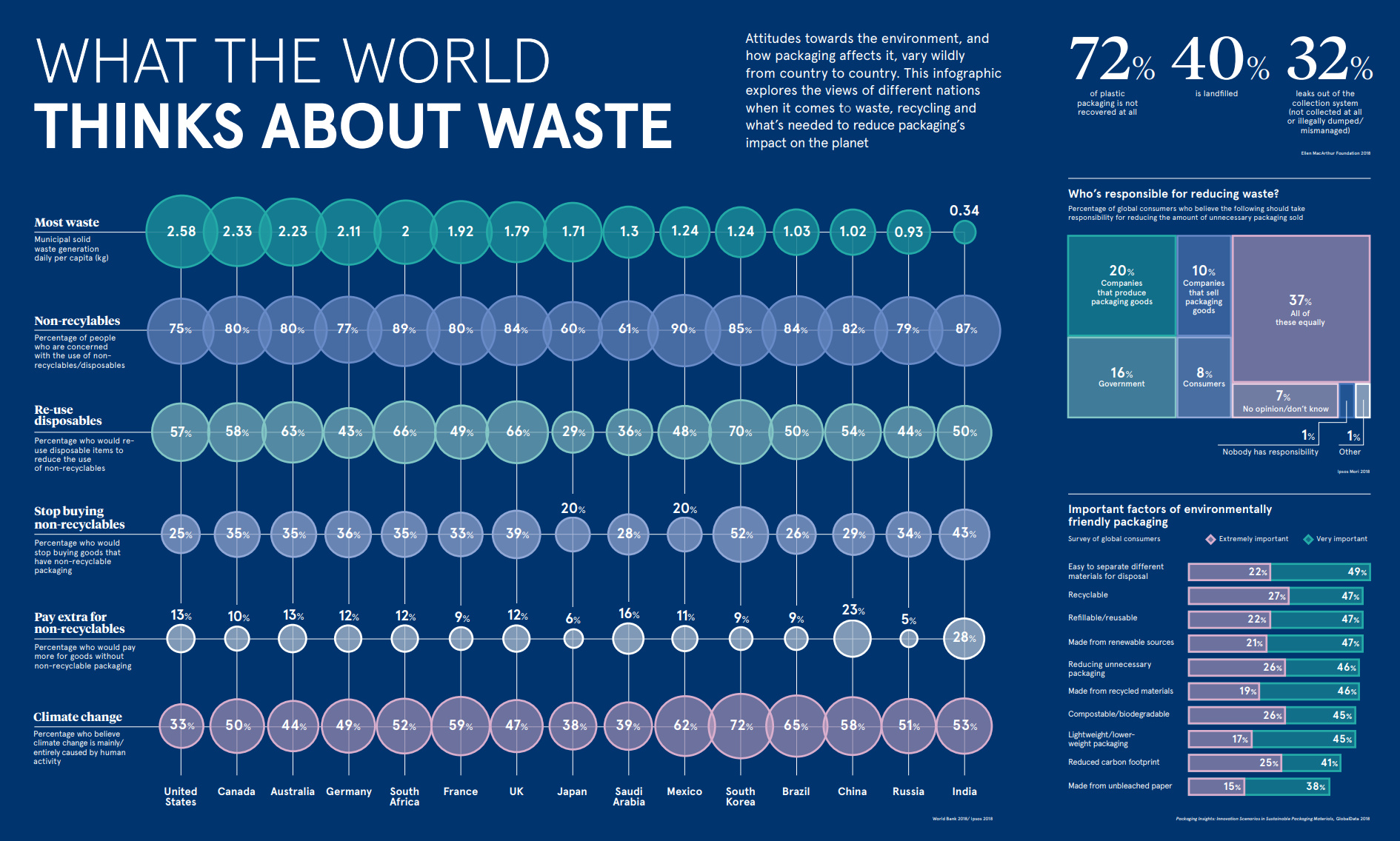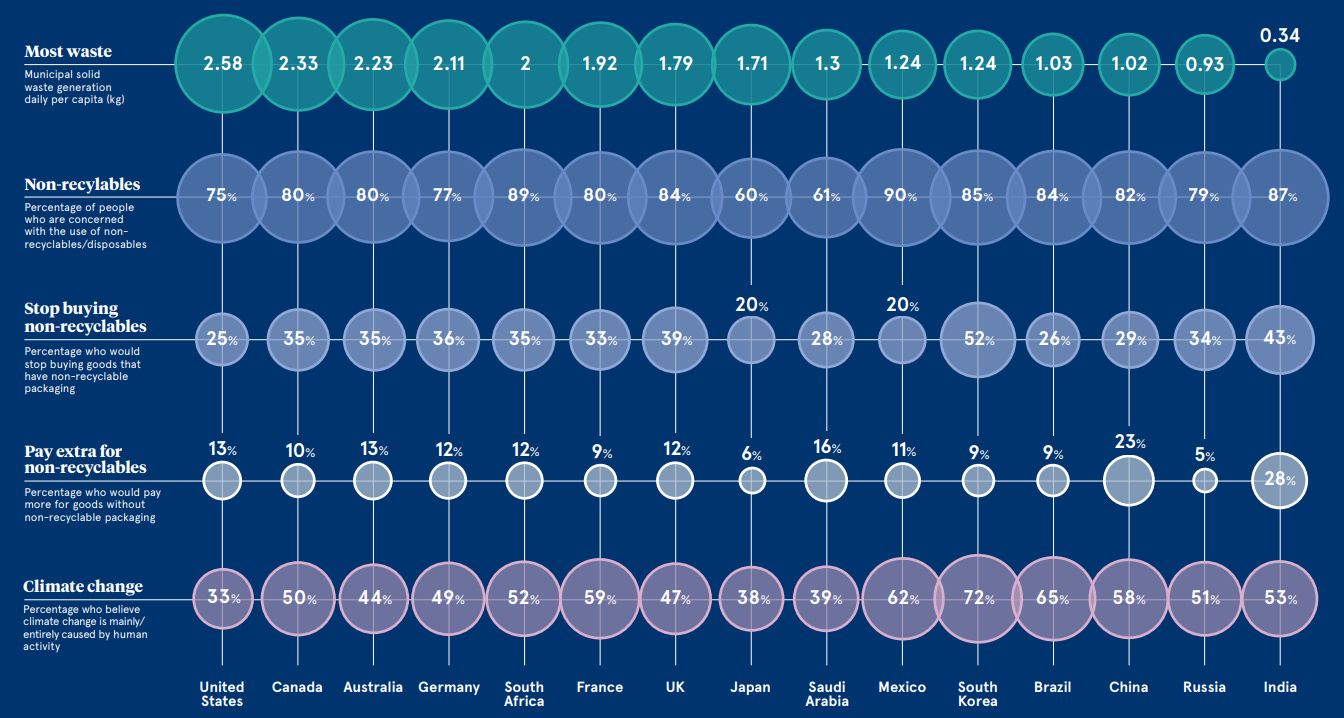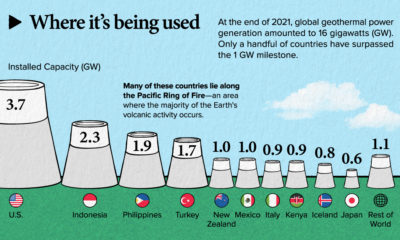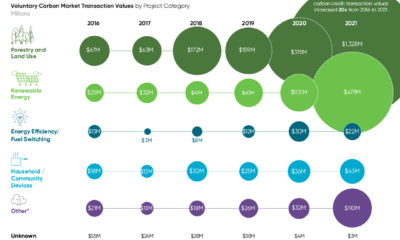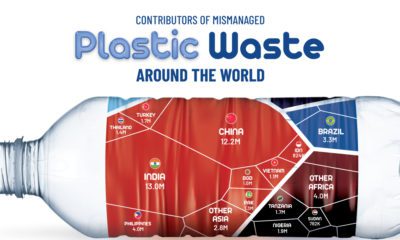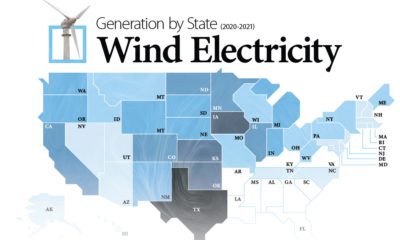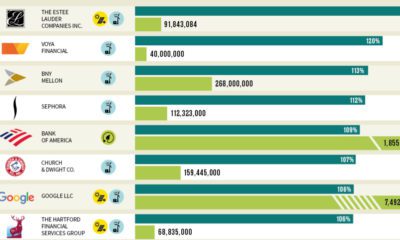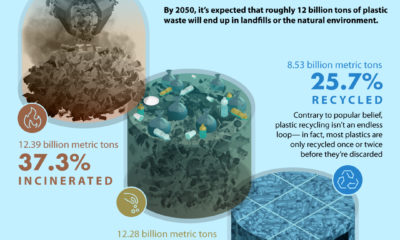Visualizing What the World Thinks About Waste
See the high resolution of this graphic by clicking here for best viewing. Waste is a seemingly inseparable part of modern life. In every industrialized society, humans consume many goods ranging from fresh food to automobiles. Inevitably, the majority of these goods are associated with waste that ends up clogging up our landfills, recycling systems, or even our oceans. While garbage is widely universal, our perceptions on it vary from culture to culture – and when it comes to thinking about the future of our planet, these differences are important to think about.
Waste by Country
Today’s infographic comes to us from Raconteur, and it shows global attitudes towards waste, recycling, and the environment. Using data from select countries, here is the amount of solid waste created per capita on a daily basis: The U.S. leads the way in waste, but Western countries like Canada, Germany, and Australia are not far behind. In India and China, waste numbers are low per capita right now, but they will continue to creep closer to Western figures as their economies further urbanize and increase consumption.
Global Attitudes Towards Waste
About 72% of plastic packaging does not get recovered at all, with 40% of all waste going to the landfill and 32% leaking out of the collection system (not collected, illegally dumped, or mismanaged). With this in mind, who is responsible for reducing plastic packaging?
20% of global respondents say that the companies producing packaged goods should be responsible 16% say the government should be responsible 10% say the companies selling packaged goods should be responsible 8% say consumers 37% say all the above are equally responsible 9% say other, including having no opinion or being undecided
Interestingly, looking at individual countries reveals different perceptions than broader, global norms.
Attitudes Differ by Country
The infographic highlights the specific differences in attitudes towards waste between a multitude of countries. While one expects big differences between countries like China and Germany, it can be shown that opinions on waste vary even between geographically proximate countries with similar levels of economic development. In South Korea and Japan, for example, waste attitudes differ considerably. Per person, Japan produces 1.71 kg of solid waste per day, about 38% more than South Korea (1.24 kg). South Koreans are more worried about the use of non-recyclable packaging, with 85% of people expressing concern about the issue. Roughly 60% of Japanese people felt the same. To address this issue, 52% of Koreans said that they are willing to stop buying goods that have non-recyclable packaging – and only 20% in Japan concurred. Even views of something broader like climate change differ between the two countries. In Japan, 38% of the population sees climate change as being caused by human activity, while 72% of Koreans see climate change the same way.
on Over recent decades, farmers have been able to more than double their production of crops thanks to fertilizers and the vital nutrients they contain. When crops are harvested, the essential nutrients are taken away with them to the dining table, resulting in the depletion of these nutrients in the soil. To replenish these nutrients, fertilizers are needed, and the cycle continues. The above infographic by Brazil Potash shows the role that each macronutrient plays in growing healthy, high-yielding crops.
Food for Growth
Nitrogen, phosphorus, and potassium (NPK) are three primary macronutrients that are the building blocks of the global fertilizer industry. Each plays a key role in plant nutrition and promoting crop growth with higher yields. Let’s take a look at how each macronutrient affects plant growth. If crops lack NPK macronutrients, they become vulnerable to various stresses caused by weather conditions, pests, and diseases. Therefore, it is crucial to maintain a balance of all three macronutrients for the production of healthy, high-yielding crops.
The Importance of Fertilizers
Humans identified the importance of using fertilizers, such as manure, to nourish crops dating back to nearly 6,000 to 2,400 BC. As agriculture became more intensive and large-scale, farmers began to experiment with different types of fertilizers. Today advanced chemical fertilizers are used across the globe to enhance global crop production. There are a myriad of factors that affect soil type, and so the farmable land must have a healthy balance of all three macronutrients to support high-yielding, healthy crops. Consequently, arable land around the world varies in the amount and type of fertilizer it needs. Fertilizers play an integral role in strengthening food security, and a supply of locally available fertilizer is needed in supporting global food systems in an ever-growing world. Brazil is one of the largest exporters of agricultural goods in the world. However, the country is vulnerable as it relies on importing more than 95% of its potash to support crop growth. Brazil Potash is developing a new potash project in Brazil to ensure a stable domestic source of this nutrient-rich fertilizer critical for global food security. Click here to learn more about fertilizer and food production in Brazil.
